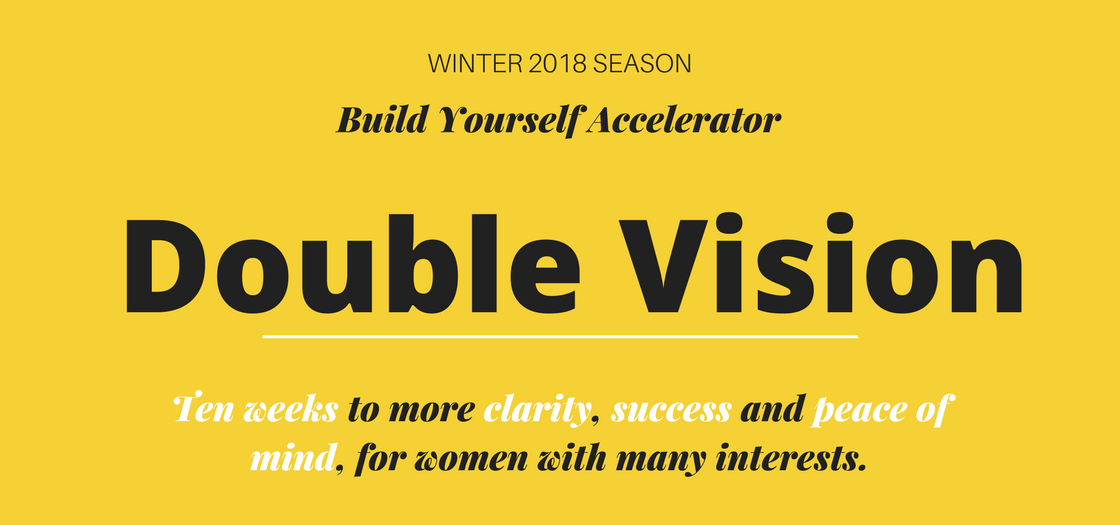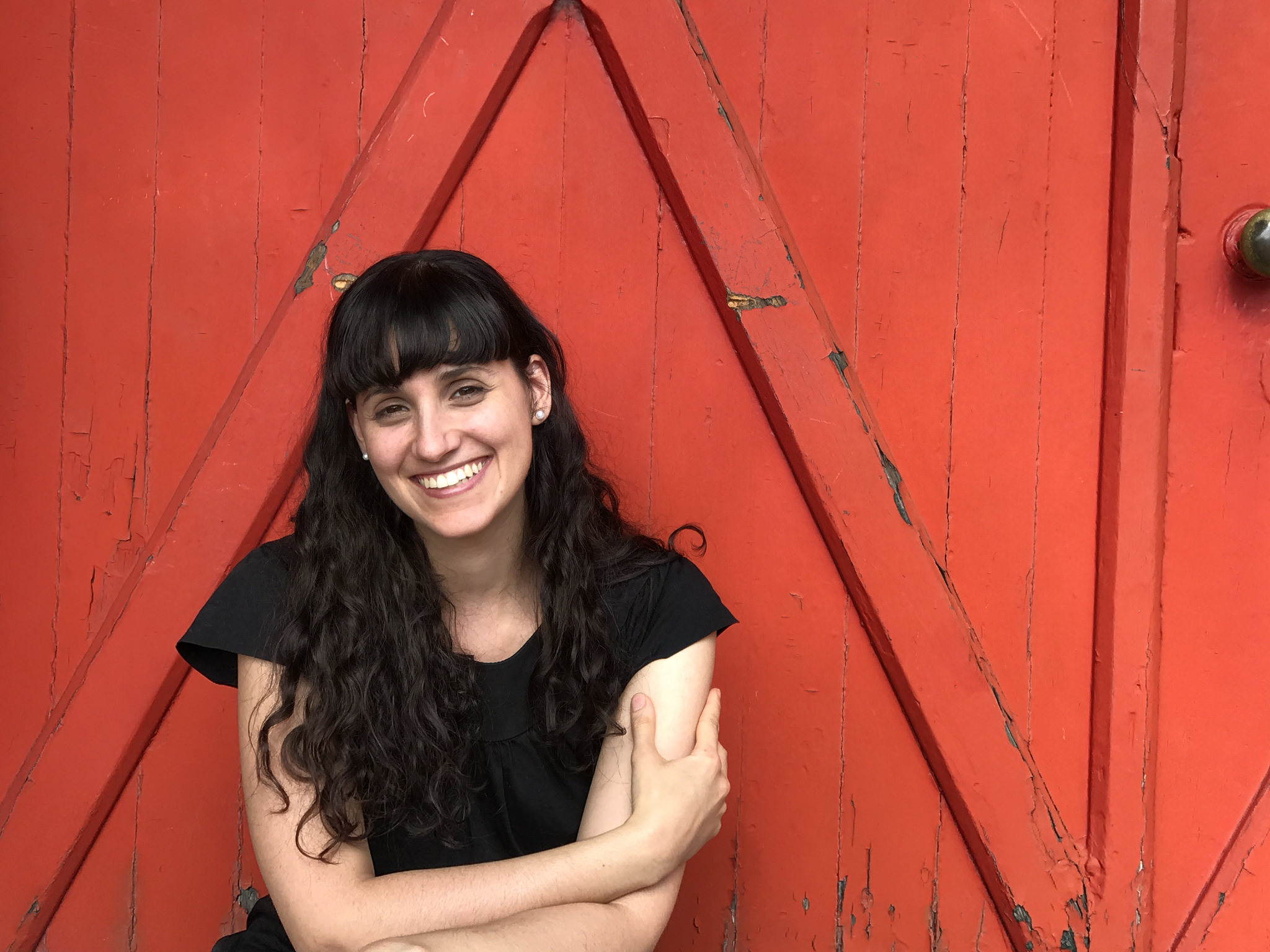As an artist, you work tirelessly to become an expert in your chosen medium. You…

Can you be successful if you have too many ideas?
Contributed by Mia Scharphie, Founder of Build Yourself career advancement training for ambitious creative women and Creative Agency.
Are you one of those business owners with 17 new ideas a day? I am, and a few years ago, when I was first starting my business, here’s what I had on my plate: a freelance design research consultancy, a research collaborative, a startup, an empowerment boot camp for women, a speaker series, and a pop-up dinner club.
Whew.
Today I run only two companies, and they are successful: a career growth training company for creative women, and a small design research consultancy. But back then, it was tiring and exhausting, and it definitely wasn’t very financially sustainable.
My accountant once said, “I don’t understand how Mia is doing so much but making so little money.”
During this time, I picked up a book — Making Ideas Happen by Scott Belsky. There was a little graph in it that stopped me in my tracks, because it described my life perfectly.

Scott says that at the start of a project, our energy and excitement for it is high. So we throw ourselves into it with gusto and passion. But then, comes the ‘messy middle:’ the slogging work of production, of making it a reality. And our excitement wanes. And many of us abandon that project, in favor of another new idea of ours — one that excites us more.
Here’s how I felt about my life and my projects.

Or maybe more accurately, like this:

It felt like I was spiraling, like I was constantly starting over from the beginning. I had my finger in a lot of efforts that took a lot of energy to support— but they weren’t necessarily supporting me back. I felt like I was constantly hustling without much financial return or stability.
Being creative and having a lot of interests was who I was. It was part of my identity. I wasn’t sure that if I ‘finally settled down’ and picked something, I’d be happy. And I didn’t know if I even could — whether I was disciplined enough to focus on one thing.
I learned over time that the cultural narratives that tell us that success means giving up creative growth are false.
They blind us to what’s really possible, and cause us to choose between opposites, when we don’t really have to.
Often they come from deep in our childhood — from narratives around what it means ‘to grow up’ and the tradeoffs we’ll have to face. In my work coaching women, I see women who think they can either have an ambitious, powerful career or have a family. I often challenge them to imagine, if they could do both, how would they do it? Because we see new possibilities when we ask ‘how can we?’ instead of ‘can we?’
Strategic focus does matter, but it’s not the same thing as just settling down. An approach that makes room for your curious side — that sees it as an asset — will help your business thrive, because you won’t be building the business that you want to abandon once you hit the “messy middle.”
So can it be done? Can you have business success even as a multi-passionate creative with too many ideas? I believe so. Here are my hard-won frameworks for how to find success as a creative business owner:
1. Give Yourself Permission to Prune
It’s ok to try a lot of things, but we all have phases when we send out a lot of new shoots. We need seasons when we prune and put our energy into just a few branches.
Many of us feel guilty about letting some branches go or worry about others thinking that we’re flaky if we redefine who we are. Women in particular often do this, especially if they struggle with people pleasing and saying no.
I wanted to quit the pop-up restaurant but I felt guilty. I was our chief hustler: I was the one who dreamed up the idea and found seed funding. I desperately wanted to leave (I was running it with my romantic partner, who had since become my ex-partner) but I didn’t want to disappoint anyone.
But some of the most interesting and successful business owners I know have redesigned their business models a million times. Emily Thompson, of Being Boss, went from running a tanning salon, to designing jewelry, to designing websites, to founding Being Boss. Amen! And she made each of these transitions confidently, taking no **** from anybody.
I’m insanely psyched that she’ll be a guest speaker in my upcoming program for women who are trying to balance multiple passions on how to evolve with boldness instead of fear.
2. Make Sure Your Projects Build Equity
The second framework that’s helped me assess what to take on and what to say no to is the idea of making sure that your creative projects build equity for you. I first learned of the concept of ‘equity’ — ownership in the future worth of a project or company from the startup world. A company may not be making any money, but its founders can still be fighting over who deserves to own more of the hypothetical future value of the company — that company’s equity.
Creatives are so full of ideas and passion that we throw ourselves into projects without thinking of the value we’re creating through our work, and who will benefit from it. It became clear to me, after cofounding a research collaborative on social impact design business models, that playing the movie forward on this project meant being an academic or a business coach — two pathways I didn’t want. So before winding down my involvement in the group, I asked myself, “how can this project still build lasting value for me?”
I realized that I could leverage the project to develop relationships with press and raise my profile as a thought leader with potential clients for my design consultancy. So I volunteered to take on our website and outreach plan. And it worked. A few relationships I developed then, have helped me grow my business today.
3. Find Your Throughline
And finally, because many things are infinitely divisible but focus is not, I try to find synergies that help me do more with less. I still run two businesses, but I asked myself recently what connected them — and I found that it was a passion for equity and a belief that change happens through investing in people. Once I realized this, I was able to spot opportunities to zero in on issues of equity in work with my design consultancy clients. I guided one of my clients to integrate a focus on racial equity on a summer media series I ran for them (which aided their recruitment efforts and increased the percentage of minorities in their programs) and helped associate me with thought leadership on this issue. I benefit from that leadership in both of my companies.
And it goes both ways — I developed a thought leadership program for one of my clients in my design consultancy— then I borrowed elements of that program for a new training for my women’s empowerment company. I’m often incubating one idea in one company that they get translated to the other.

It’s not always easy but it is possible for us creative business owners, to not just spiral, but to spiral upwards working on efforts that support you in a lasting way. It’s not about just being more disciplined or “finally settling down,” it’s about finding some basic rules of thumb that can help you figure out which projects will move you forward, and finding ways to get more out of the investment of your time.
This isn’t easy work, it takes pulling yourself out of the day-to-day hustle, getting a new perspective on what ties your story interests together, and finding those opportunities to be strategic. It’s not easy to do by yourself and it’s definitely not easy to do it in your own head.

Find Your Throughline: My Worksheet Activity
For this reason, I’ve put together a worksheet guide to finding your throughline that you can access for for free. This is the process I’ve used to get that bird’s eye view, and find the connections that help me be strategic. You can use it to set goals for the yourself that will help you spiral up — not just spiral.
Get the worksheet here.
This is hard work. I won’t say that I have it all figured out — I definitely have days when I feel like I’m living a double life — but my businesses are making money, attracting clients and most importantly, I love what I do.
I didn’t have to choose between being creative and being successful.
Goal Setting Program for Multi-Passionate Women
Did this article resonate? Want to apply these lessons in your life and business? Take my January 2018 program Double Vision.
Double Vision a ten-week live online training, community and accountability program for women who have more than one creative passion and pursuit, and are working to integrate them, and feel less fragmented and more focused. This may mean having a serious passion (or three!) that you’re struggling to pursue while keeping the balls of work and life in the air, or working and having a side hustle.
If you are in a position where you have a lot of interests but no clear goals for yourself professionally, Double Vision can also help. Double Vision teaches a decision-making process for choosing what to invest your time in, and how to do it more strategically — something is relevant to women who have multiple interests and commitments in many kinds of ways.
Find out more here.
 Mia Scharphie is a creative changemaker and the creator of the Build Yourself career advancement training for ambitious creative women.
Mia Scharphie is a creative changemaker and the creator of the Build Yourself career advancement training for ambitious creative women.




